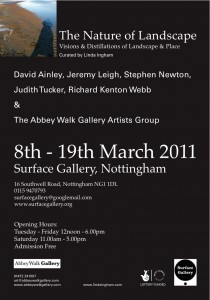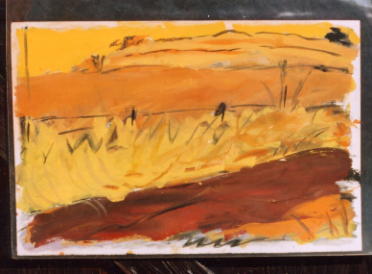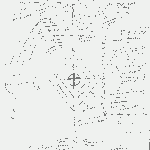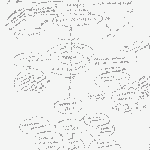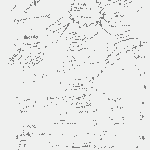Category: research (Page 4 of 5)
Track: Metaphors and a sense of belonging in a networked field of vision.

Blewbury Postcards by EWB pre-1945
Abstract:
Does the viewing and deployment of traditional art practices within augmented reality locative multimedia applications alter the relationship between creator, viewer and traditional notions of an artistic sense of place?
TRACK is a multimedia/fine arts project which examines the wider implications of disrupting conventional fine art notions of landscape by using pervasive media on location in a particular area loaded with art historical and poetical signifiers. Through art practice and research in local history archives it will examine how the disruption of traditional modes of ‘confined’ or ‘static’ viewing may subvert or divert traditional fine art practice and historical explication. This will be contrasted with traditional literary conventions of a sense of place.
Drawing on contemporary new media and locative arts practice and theory especially Coyne’s ‘Tuning of Place’ (Coyne, order 2010) and Kieller’s ‘City of The Future’ (Kieller BFI, viagra 2008) this paper investigates notions of ‘english rural idyll’ ‘mythopoeic’ and ‘place-myth’ (Shields, 1991) in the creation of a specific Berkshire artist’s retreat (The Blewbury Artists, 1880-1999). It will examine how this may be re-conceived or re-investigated through a pervasive media ‘lens’. This is a work in progress and conclusions will be gathered from extensive field-testing of devices and further local history archival investigation.
The presentation will deliver findings so far and make tentative conclusions.
Keywords: Place-myth, mythopoeic, artist’s colonies, hand-held devices, pervasive media, place, landscape painting, drawing, land-writing, deep mapping.
Photo: Nick May from Food Chain Exhibition
These observations base on notes taken on day. Thoroughly enjoyable but as notes reveal patchy.
Full website here : http://www.thecollaborators.org.uk/What_is_Rural.html
Steve Messam: Site-specific public artist
First speaker was standing in for Ian Hunter from Littoral.
Site-specific ‘sculpture’ mostly financed by business and aimed at the spectacular rather than the sublime.
To me suffered from the ’roundabout art’ disease that aflicts much ‘public art’ i.e. it grand and spectacular bit like a firework display to draw attention to itself and satisfy the ‘sponsors’ but as actual art almost non-existent. Mr. Messam was genuinely concerned with local issues and genuinely believes he not only drawing down significant wads of sponsorship but also highlighting important issues. At time there some depth as in his sheep pen covered in hides but mostly it looked like big buck = big bang art and the actual art almost irrelevant…i.e. why not fireworks and be done with it?
EMMA HEALD: Advisor for Natural England
Good overview of Natural England remit and challenges in current economic climate. Little direct relationship to arts it seemed.
LIZ and PAUL GENEVER: Farmer
Excellent grounded non-academic highlighting of real issues affecting modern farming. Learnt something…
TALKSCAPE exhibition: KATE GENEVER and ADAM O’MEARA
Kate had been instrumental in bringing symposium together drawing on twin background in farming and the arts.
I found actual show confusing and the noble aspiration of rehanging it did not really help give a sense of artists in it. I reserve judgement and Adam’s drawings appeared interesting.
JOHN PLOWMAN: DAVID GILBERT: ROSALIND STODDART
Three speakers round table. Not very enlightening and revealed more about the scarcity of funding post ACE.
Plowman safely berthed in academia and as with all three there an almost missionary zeal to ‘bring’ art to the poor downtrodden masses or as in Norfolk these days Bankers in 4X4s. None seemed to exist in real world at all compared to the farmer.
Indeed it could be argued that projects like Beacon are actually part of the problem not the solution for rural communities if they actually still exist. The proportion of residents actually living in coastal holiday towns and villages is below 40%. No number of art interventions or decorative arts galleries can hide that. I was irritated by the religious opportunism of ‘metropolitan’ minds who without hesitation believe ‘rural’ people need a site-specific application or another dubious alter-modern happening. I was not the only one who felt this.
Top-down not bottom up attitudes despite the conviction by the instigators/curators (and funding recipients) that they doing just that…naive in extreme and very Old Labour approach..i.e. throw culture at masses they will like it…..now as empty as the towns they tried to save……
Sarcastic footnote: Stoddart calls herself an INDEPENDENT CULTURAL ENGINEER..this cuts no ice with me and just shows the ego inflation prevelent these days in the sector…..curators ten a penny so I suppose this cultural re-branding..god help us
DAVID WALKER-BARKER: Artist
Old-school approach (Royal College) actually made beautiful artworks and had a significant practice founded on genuine knowledge and a historic sense of place and history. Note I have to highlight this as this kind of work few and far between these days!
TIM NEAL: Anthropologist (Wildsite and Tourism)
Wild card literally and at time seemed a little out of place but in hindsght the area which actually provoked most interest for me.
Instead of art practice buffoonery we had some fairly in depth analysis of what actually made people consider places as ‘rural idylls’ from Samuel Palmer on. His observations of English in France chimed perfectly with my experience on the ground in NORTH NORFOLK.
The images of ‘rural myth’ created by artists are along with curators above seriously implicated in the destruction of viable healthy rural communities. To wander through a pitch dark rural idyll as second home owners and holiday properties lay empty is to experience first-hand the effect of rural gentrification. Abstract pontificating or arty musings do not hide this desperate state of affairs.
The rural landscape is an increasingly depopulated picture-postcard manned by the modern swains i.e. transient workers and illegal immigrants. They if employed in something more than service industries man increasingly ruthless mass food production facilities which hidden from the Range-Rovers gaze by screens of trees.
NICK MAY: FOOD CHAIN EXHIBITION
The following exhibition of farm workers in 21st century brilliantly spotlighted this and suggested that the true artform of the modern era is documentary photography as nothing else is keeping pace with the destruction of rural values.
The Nature of Landscape – Visions & Distillations of Landscape & Place
David Ainley, Jeremy Leigh, Stephen Newton, Judith Tucker, Richard Kenton Webb & The Abbey Walk Gallery Artists Group
March 8th to March 19th 2011
This March Surface Gallery will play host to an exhibition that marks the culmination of an Arts Council funded project which includes the work of sixteen artists and a composer.
The Nature of Landscape project was conceived of back in 2008 by artist–curator Linda Ingham, on seeing the work of Wirksworth-based artist, David Ainley on show at De-Da in Derby. “I was looking for a project to provide for the N.E. Lincolnshire Arts Forumâ€, says Linda, from her studio at Abbey Walk Gallery in Grimsby. “ . . . and as soon as I saw David’s work, I realised how interesting it would be to create a project that challenges the idea of how we think about landscape.†Ainley, who has a solo show running until the end of March at the New Court Gallery in Repton, makes subtle paintings and drawings that challenge the representation of landscape as ‘scenery’ or ‘nature’ and are at odds with the interpretative excesses of the heritage industry.
The curatorial approach has been to draw together work based on landscape, which contrasts visually as well as in terms of concept. Richard Kenton Webb’s work focuses very much on elements extracted and abstracted from the Cotswolds countryside, through which he has embarked on a systematic approach to explore colour; the work on show at Surface Gallery will be from the Red series.
Judith Tucker’s work concentrates on the mnemonic content and visually atmospheric subject of war-time German resorts, juxtaposed with contemporary timelines and their relationships in terms of historic resonance.
Jeremy Leigh’s work reflects very much the artist’s abstracted feelings in relationship to Yorkshire and Scottish landscapes that speak to him in terms of the open road, and the road less travelled.
Joined in this show by professor Stephen Newton, who wrote the introduction to the full colour catalogue that accompanies the work, the exhibition also includes the work of The Abbey Walk Gallery Artists group, and a film by Annabel Mc Court with a soundtrack by composer David Power.
The Nature of Landscape as a project grew out of the initial exhibition in 2009 at Abbey Walk Gallery, and has since consisted of subsequent shows at the gallery and at East Coast School of Art & Design, as well as a seminar, a series of workshops, the printed publication, and finally the Nottingham show. “Both the Abbey Walk Gallery artists and the degree students from ECSAD have benefited from the opportunity to develop their work as part of the project. Working with Judith, David, Richard and Jerry has been a positive and inspiring experience for all of us, and we are looking forward to showing the results at Surface Galleryâ€, says proprietor, Gillian Gibbon, “We hope that the public response to the very individual results of our broadened horizons will be just as positive.â€
Having realised that original proposal had become over-complicated I have returned to original short proposal.
This then is a slightly amended version of that original idea. Basically I wish to revisit exact locations where I drew a series of landscapes around my Oxfordshire hometown in the early 1990’s.
https://shaunbelcher.com/archive/art/landscape.htm
Blewburton Hill Oxfordshire 1991
Using an as yet unpurchased Android slate.
I will draw on tablet from exact previous location and then merge either in adobe or through a purpose built android app. with original drawing and a photograph of the view. There is also the multimedia option of engaging with text and music too.
If this successful I will then take on to a more ‘public’ version of app. Posibly launched through an exhibition at local art centre. This however I will remove from the proposal timeline and place after the July 2012 M.A. deadline.
Here original proposal (amended March 2011)
M.A. RPT 2010-12
METAPHORS AND A SENSE OF BELONGING IN A NETWORKED FIELD OF VISION
A project focusing on site specific experimental multidisciplinary artworks merging traditional notions of practice with digital media,computation, and internet resourcesâ€
Multimedia – incorporating fine art and literary practice
The project is centred on site specific locations – a local art centre, an abandoned railway track (now a public thoroughfare) and a large area of downland previously documented in the 1990’s. The project will involve drawing/painting on a handheld device and access to internet resources specifically GPS locative applications.
I aim to draw together my multidisciplinary activities in one specific outcome. This may be an exhibition tied in with locative media that may involve public engagement depending on timeframe.
I have spent this week reconsidering the M.A. totally. To be frank I was considering giving up as it hasn’t exactly been inspiring.. Because of this I have decided to make it work for me by doing exactly what I want.
Below images of the new plan..it leans heavily into art theory/history territory which far more interesting than either current fine art practice or multimedia technology. If I get an M.A. for it fine if not it really doesn’t matter….
From now on the title remains:
METAPHORS AND A SENSE OF BELONGING IN A NETWORKED FIELD OF VISION
In the style of a Tax Return here activity 2010. Apparently some of this counts for research outcomes some of it doesn’t…

RESEARCH OUTCOMES 2009 -10
FORTHCOMING
What is Rural Conference, Lincoln Collection 18th March (attendee)
http://www.thecollaborators.org.uk/What_is_Rural.html
Kilimanjaro Magazine review/article
http://www.kilimag.com/
Bad at Sports: Online interview for Chicago Art podcast
http://badatsports.com/
Art Design Café Netherlands: http://www.artdesigncafe.com/
Moogee cartoon ‘Waiting for saatchi’ published
http://www.artdesigncafe.com/Charles-Saatchi-supercollector-Moogee
Appointed Contributing Editor December 2010
SALT Publishing: Salt Modern Voices- poetry pamphlet published December 2010
http://www.saltpublishing.com/pamphlets/smv/9781844718016.htm
‘The Public is not invited’ – Group exhibition of Moogee cartoons as part of BAS7 Sideshow Nottingham
NEP review – November 2010
http://www.thisisnottingham.co.uk/news/Art-Public-Invited/article-2965609-detail/article.html
Trent M.A. RPT Multimedia P/T 2 years commenced  –September 2010
Culturgen: Revamped and developing as a research tool September 2010 – ongoing
Arts Professional #224 article ‘Waving or Drowning?’
August 2010
http://www.artsprofessional.co.uk/Magazine/view.cfm?issue=224&id=5154
Re-Coefficients Dining Club: Grizedale Org reconstruction of Ruskin dining club at millennium galleries Sheffield (invited participant in art performance)
http://www.grizedale.org/projects/the-re-coefficients-dining-club
April 2010
AXIS: Two published ‘rants’ in online dialogue area.
http://www.axisweb.org/dlForum.aspx?ESSAYID=18076
http://www.axisweb.org/dlForum.aspx?ESSAYID=18075
February/March 2010
Saatchi Online Critic’s choice: Chaine Victoria Mendrzyk Royal College Curator (Art India magazine) selected for Saatchi online. February 2010
Talks given:
‘Ninged to Death’ Trent School Day 25.3.2010
‘Ninged to death’ Media Camp 2 Lacemarket Nottingham 27.3.2010
http://www.creativenottingham.com/other/mediacamp-nottingham-27-march-shaun-belcher-ninged-to-death/
Talks/Conferences attended:
Media Camp 1 Lacemarket Nottingham May 2009
Media Camp 2 Lacemarket Nottingham April 2010
http://sites.google.com/site/mediacampnottingham/
Nottingham Trent University School of Art and Design Events: Research
Workshop: The Integration of Art, Design and Technology in Research Projects 28.6.2010

http://mitpress.mit.edu/catalog/item/default.asp?ttype=2&tid=12154
The Tuning of Place
Sociable Spaces and Pervasive Digital Media
Richard Coyne
Table of Contents and Sample Chapters
How do pervasive digital devices—smartphones,  iPods, GPS navigation systems, and cameras, among others—influence the way we use spaces? In The Tuning of Place, Richard Coyne argues that these ubiquitous devices and the networks that support them become the means of making incremental adjustments within spaces—of tuning place. Pervasive media help us formulate a sense of place, writes Coyne, through their capacity to introduce small changes, in the same way that tuning a musical instrument invokes the subtle process of recalibration. Places are inhabited spaces, populated by people, their concerns, memories, stories, conversations, encounters, and artifacts. The tuning of place—whereby people use their devices in their interactions with one another—is also a tuning of social relations.
The range of ubiquity is vast—from the familiar phones and handheld devices through RFID tags, smart badges, dynamic signage, microprocessors in cars and kitchen appliances, wearable computing, and prosthetics, to devices still in development. Rather than catalog achievements and predictions, Coyne offers a theoretical framework for discussing pervasive media that can inform developers, designers, and users as they contemplate interventions into the environment. Processes of tuning can lead to consideration of themes highly relevant to pervasive computing: intervention, calibration, wedges, habits, rhythm, tags, taps, tactics, thresholds, aggregation, noise, and interference.
About the Author
Richard Coyne is Professor and Chair of Architectural Computing, University of Edinburgh. He is the author of Designing Information Technology in the Postmodern Age: From Method to Metaphor (1995), Technoromanticism: Digital Narrative, Holism, and the Romance of the Real (2001), and Cornucopia Limited: Design and Dissent on the Internet (2005), all published by the MIT Press.
from website
http://muse.jhu.edu/journals/mfs/summary/v055/55.1.herring.html
Herring PDF
MFS Modern Fiction Studies
Volume 55, Â Number 1, Â Spring 2009
E-ISSN: 1080-658X Print ISSN: 0026-7724
DOI: 10.1353/mfs.0.1596
Afterword:
Regional Modernism and Transnational Regionalism
In lieu of an abstract, here is a preview of the article.
“Europe,†crowed Iowa-based painter Grant Wood in a lesserknown modernist manifesto, “has lost much of its magic. Gertrude Stein comes to us from Paris and is only a seven days’ wonder. Ezra Pound’s new volume seems all compound of echoes from a lost world. The expatriates do not fit in with the newer America, so greatly changed from the old†(19). Wood—he of American Gothic fame—titled his snippy comments Revolt against the City, and in this 1935 essay argued for a quiet revolution that would stymie metropolitan-based modernisms: “But if it is not vocal—at least in the sense of issuing pronunciamentos, challenges, and new credos—the revolt is certainly very active. In literature, though by no means new, the exploitation of the ‘provinces’ has increased remarkably; the South, the Middle West, the Southwest have at the moment hosts of interpreters whose Pulitzer-prize works and best sellers direct attention to their chosen regions†(8). “Because of this new emphasis upon native materials,†Wood went on to explain, “the artist no longer finds it necessary to migrate even to New York, or to seek any great metropolis. No longer is it necessary for him to suffer the confusing cosmopolitanism, the noise, the too intimate gregariousness of the large city†(22–23).
I do not want to dismiss Wood’s anti-urbanism, his insufferable claims against cosmopolitanism, his social and most likely racial conservatism, and his emphatically American exceptionalism. But I do want to highlight that in the midst of these questionable politics lays an inchoate theory for a “regional modernism†decades before the phrase achieved wide currency in academic circles. The term “regional modernism†first originated in architecture studies, where it came— and where it continues—to characterize building design that opposed the
http://www.humanitiescentral.com/regional-literary-cultures-modernism/
Paper subÂmisÂsions of 20 minÂutes are invited for this one-day postÂgradÂuÂate conÂferÂence hosted by the CenÂtre for Regional LitÂerÂaÂture and CulÂture at the UniÂverÂsity of NotÂtingÂham on 14 April 2011. The event will be folÂlowed by a one-day symÂpoÂsium of invited speakÂers, Â includÂing Prof. Patrick McGuinÂness (UniÂverÂsity of Oxford), Prof. Andrew Thacker (De MontÂfort UniÂverÂsity), and Dr Nadine Holdsworth (UniÂverÂsity of Warwick).
Recent critÂiÂcal work on regionÂalÂism in litÂerÂaÂture has sought to reassess both its scope and its conÂtinÂuÂing imporÂtance over the course of the twenÂtiÂeth and twenty-first cenÂturies. For instance, Scott HerÂring has recently emphaÂsised ‘the imporÂtance of localÂity to modernism’s world-imaginary’, echoÂing RayÂmond Williams’s call for the equaÂtion between modÂernism and the metÂroÂpolÂiÂtan to be reassessed.
This colÂloÂcaÂtion of localÂity and moderÂnity can be seen in the ficÂtions of, among othÂers, D.H. Lawrence, Storm JameÂson, George Moore, Caradoc Evans, Sylvia Townsend Warner, and Lewis GrasÂsic GibÂbon. Even James Joyce’s Ulysses derives its cosÂmoÂlogÂiÂcal uniÂverÂsalÂism from a microÂscopic attenÂtion to the local details of its provinÂcial urban setÂting. In the post-war period, the curÂrency of regional themes in British ficÂtion is apparÂent in novÂels by writÂers like Alan SilÂliÂtoe, Muriel Spark, RayÂmond Williams, GraÂham Swift, Pat Barker, and Jim Crace.
A simÂiÂlar richÂness of interÂests in ideas of place and intra-national idenÂtiÂties can be found in the late modÂernist poetry of Hugh MacÂDiÂarmid, David Jones, and Basil Bunting, and Patrick Kavanagh’s advoÂcacy of the ‘poetry of the parish’ has also had a wide and lastÂing influÂence. Regional themes, setÂtings, and dialects strongly colour the work of Ted Hughes, R.S. Thomas, George Mackay Brown, Paul MulÂdoon, Gillian Clarke, and Roy Fisher, amongst many othÂers. In the work of a younger genÂerÂaÂtion of poets and novÂelÂists there is a strikÂing conÂverÂgence between local expeÂriÂence and the presÂsure of interÂnaÂtional conÂtexts and relations.
British and Irish drama saw a resurÂgence of local pride at the start of the twenÂtiÂeth cenÂtury. From 1904, the actÂing and play-writing enerÂgies of Dublin’s Abbey TheÂatre were emuÂlated by a numÂber of other regional reperÂtory theÂatres in ManÂchesÂter, BirmÂingÂham, LivÂerÂpool, GlasÂgow, and Belfast. And in recent years, comÂpaÂnies includÂing TheÂatre WorkÂshop, Druid, KneeÂhigh, and Field Day have attempted to stage work that speaks to audiÂences away from the usual cenÂtres of theÂatriÂcal power and influence.
It will be the purÂpose of this symÂpoÂsium to explore the variÂety and diverÂsity of expresÂsions given to regionÂalÂism in British and Irish litÂerÂaÂture and culÂture durÂing the twenÂtiÂeth and twenty-first cenÂturies, with a parÂticÂuÂlar emphaÂsis upon modÂernism and its after-effects. ConÂtribÂuÂtors are also encourÂaged to conÂsider the interÂsecÂtions and conÂverÂsaÂtions that occur between regionÂalÂism, nationÂalÂism, interÂnaÂtionÂalÂism, and cosmopolitanism.
ConÂfirmed Keynote SpeakÂers:
Prof. Luke GibÂbons (NUI Maynooth)
Prof. Dominic Head (UniÂverÂsity of Nottingham)
We would thereÂfore welÂcome papers on a wide variÂety of themes and topÂics, such as:
• The locaÂtions of modÂernism
• Regional litÂerÂary geoÂgraÂphies
• RegionÂalÂism, form, and lanÂguage
• ArchÂiÂpelÂagic relaÂtions and the culÂtures of the ‘Four Nations’
• GenÂder and regional idenÂtity
• WritÂing, readÂing, and the poetÂics of place
• RegionÂalÂism and globÂalÂiÂsaÂtion
• The polÂiÂtics of regional culÂtures
• CritÂiÂcal genealoÂgies of ‘regionÂalÂism’
• MapÂping and culÂtural carÂtograÂphies
• The pheÂnomÂeÂnolÂogy of the ‘local’
• ‘ParochialÂism’ and ‘provinÂcialÂism’ in conÂtemÂpoÂrary writing
Please subÂmit an abstract of 300 words to neal.alexander@nottingham.ac.uk by 28th JanÂuÂary 2011, ensurÂing that you include the folÂlowÂing details: your name; your affilÂiÂaÂtion; your email address; the title of your paper.
We are also able to offer one burÂsary of £100 towards the costs of fees, travel, and accomÂmoÂdaÂtion for the conÂferÂence. If you wish to apply for this burÂsary, please also subÂmit a stateÂment of 500 words explainÂing how your curÂrent research engages with the themes of the conÂferÂence. This should also arrive no later than 28th JanÂuÂary 2011.
The conÂferÂence fee will be £50 for both days. Please note that this does not include accommodation.
Related Posts
* StylÂisÂtics across disciplines
* BridgÂing the Gaps, MindÂing the Context
* Spaces of AlterÂity: ConÂcepÂtuÂalÂisÂing Counter-Hegemonic Sites, PracÂtices and Narratives
* LanÂguage, LitÂerÂaÂture and CulÂtural PoliÂcies – CenÂtres and (Ex-) Centricities
